Summer is almost over and now is the perfect time to take control of your old eating habits before the school year crunch and rapidly approaching holiday season. Keep your eating straight forward and simple when you have diabetes as this will allow you to roll into the busy season with less anxiety, and more pleasure, while reaping the benefits of healthy eating. Meal planning and food preparation should not steal endless amounts of time from you or your family, but it should serve the purpose of dining well. It doesn’t seem to matter what time of the year it is, food always matters when trying to control blood sugars and the main question seems to be: “What should I eat”?
Simple Trends for Healthy Eating
Don’t make high quality nutrition more complicated than it needs to be even with diabetes. All diabetes management programs teach “there is no special diabetes diet and no one can stay on a diet”. What is taught in diabetes management programs is “that a healthful meal plan should begin today and continue for the rest of your lifetime”. Can you “cheat” sometimes and make poor food choices on occasion? Yes! Being human allows for moments of weakness as long as you go back to eating the simple way with the most natural whole food for a majority of the time.
Calorie Counting & Weighing Food
Do not focus on counting calories or weighing food since it becomes impossible to stick to this. Keeping a food journal is an excellent way to see what and when you are actually eating. Each bite, taste or sample adds up by the end of the day and this may make you more accountable. I often hear patients say “they walk around Costco and end up eating a complete meal of samples before they even order lunch”. With written documentation you have an understanding of what actually goes into your mouth.
Weigh Often
Check your weight daily, weekly or on some sort of schedule to get an idea of how things are progressing or digressing. If you are someone who obsesses about the “number on the scale” then try to use your clothes as an indicator of weight loss or gain. Some of us retain more fluid and this can easily upset the person focused on the daily scale number. It is important to keep a tracking method so your next MD appointment does not show a “25 pound weight gain” since the last 3 month visit.
Focus on Natural Foods
Focus on whole natural foods for the most vitamins, minerals, flavor and best quality nutrients with the lowest calories and no added or artificial flavors or ingredients. These foods can be more expensive but if you are able to buy in quantity through warehouse shopping, freezing and storing what you don’t immediately need, you will reap the health benefits. There are food co-ops which may entitle you to buy as a small group and offer you better pricing. Buy foods that are in season and locally grown for the best price.
Keep it Simple With Vegetables
Vegetables should be eaten often since they are low in calories, high in water content, fiber, vitamins, and minerals. Include spinach, along with kale, watercress, Swiss chard and parsley as a base of greens for a salad. Avoid pale green iceberg lettuce which does not contain a variety of essential nutrients as seen in dark greens.
Spinach has a high iron content which adds fuel to muscles. It contains vitamins A, B-2, B-6, C, E and K. Spinach has copper, calcium, potassium, and magnesium which can help regulate blood pressure, promote healthy skin and build bone strength.
Watercress, parsley and kale can influence gut bacteria which also assists brain function.
Swiss chard is often a forgotten vegetable but should be included in your eating plan. Some people think it tastes extremely bitter but try it before writing it off. It has a high level of phytonutrients seen in the dark green leaves and red, purple, orange and yellow stalks. Swiss chard has anti-inflammatory benefits which help with diabetes and heart health. According to Diabetic Living online, “Swiss chard has unique benefits for blood sugar regulation”. It is low in calories and high in fiber and can be blended with more common greens such as Romaine and Arugula. It can also be sautéed with spices which will blunt the bitter taste.
Artichokes are often avoided since they seem complicated to prepare. They can be grilled, baked or broiled and are an excellent source of magnesium. Magnesium “helps regulate over 300 biological processes in our bodies”. Many of us are deficient in magnesium. Artichokes are high in fiber, vitamin K, and folic acid. They have antioxidants which may prevent cancer and heart disease. They promote bone health, liver function and may boost metabolism. Boil artichokes after removing the outer hard leaves to soften them and then cut them in half and mist with olive oil and a pinch of kosher salt. Grill or bake until crisp, drizzle fresh lemon juice on them and serve as a quick and easy side dish.
Green beans are plentiful in late summer, inexpensive, and are low in calories while high in fiber and have a mild taste compared to many other green vegetables. Steam and then blanch them in cold water to retain their bright green color. Make a salad with green beans, chick peas, red pepper chunks, black sliced olives and olive oil and vinegar. Add fresh dill to brighten the flavors a notch. Sauté them with low-sodium soy sauce, lemon juice, olive oil and fresh garlic. Green beans have lutein and beta-carotene for eye and skin health. There are so many other vegetables to choose from so break out of your standard peas and carrots to get the most balanced nutrients possible.
Eat Fresh Fruits
Whole fresh fruits should be eaten for fiber, vitamins, and minerals and are a delicious way to add a sweet treat to the end of a meal. Many people insist upon using a Nutri-bullet “blending 6 fruits with milk” and drinking 20 or more ounces. Their blood sugars shoot sky high and they can’t lose any weight. Try to avoid blended fruit drinks and stick to whole fruit. Choose one cup of fresh mixed blueberries, strawberries, blackberries and raspberries in the height of berry season and you will have no need for other sweets or desserts. Berries are high in fiber and contain polyphenols (anthocyanins and ellagic acid) which are plant compounds that promote general health, improve HDLs, and may lower blood pressure. They are low on the glycemic index which is great for people with diabetes. Watermelon is the perfect addition to an end of summer BBQ feast. It is loaded with vitamin C and lycopene which may protect against cancer, heart disease and macular degeneration. A cup is a serving and contains about 92% water. It is not off limits for people with diabetes although I am often asked “why can’t I eat watermelon”? Remember it is the portion size more than the type of fruit. Watermelon is high in vitamin A (beta carotene) and it has potassium which assists with muscle and nerve function.
Nuts and Seeds
Eating nuts and seeds in moderation is a healthy adjunct to an eating plan especially when you have diabetes. They have protein, fiber, plant sterols, vitamins and minerals. Nuts and seeds can be added to yogurt, hot or cold cereals, casseroles, salads or eaten in a handful. They can be crushed or blended to add flavor to sauces. Favorite choices are walnuts and almonds. Walnuts are an easy power-packed snack and are considered “the king of nuts”. They are digested slowly (fat content) which keeps you less hungry. Walnuts are especially good for people with diabetes since they may reduce insulin levels and promote heart health. They contain tryptophan which promotes serotonin production; serotonin is a mood booster. Walnuts have copper, manganese, biotin, and are a terrific source of Omega 3s. Walnuts also offer ALA, alpha linoleic acid, which may prevent blood clots. Store them in an air tight container in the freezer since they can go rancid quickly. Almonds are another perfect nut, when eaten in moderation, for those with diabetes. They have lots of healthy fats, protein and fiber and are low in carbohydrates. They contain copper, magnesium, phosphorous and vitamin B2. Try 6 almonds with the brown skin (antioxidants are not found in white blanched almonds) and 6 red seedless grapes for a small but mighty snack. There are many seeds to choose from but Chia seeds are a great place to start if you have diabetes. Throw them, in proper portion size, on yogurt, salads or cereals. They are high in fiber, Omega 3s, calcium and antioxidants. A study presented in Diabetes Care stated “Chia seeds seem to lower glucose passage into the blood. They lower triglycerides, lower LDLs and raise HDLs”. Chia seeds have an affect on C- reactive protein levels which are an indicator of inflammation and heart disease. Remember that 6-10 nuts and 1-2 tablespoons of seeds are generally a serving size so do not plan on eating a cup of nuts or seeds for a snack!
Legumes
Red, black, white beans, chick peas and lentils can be tossed into salads, stews, soups or casseroles. Eating legumes in their simplest form is a positive step for your general nutrition and diabetes health. They contain protein but are considered a carbohydrate and must be counted to maintain blood sugars. They are loaded with fiber, vitamin Bs, magnesium, potassium and zinc. They are difficult to digest and require extra calories to be broken down. The high fiber keeps you full longer, prevents constipation and lowers the risk of colon cancer as well. You can buy dry bagged beans and soak them overnight or purchase them in cans, rinse off the sodium and eat immediately.
Whole Grains
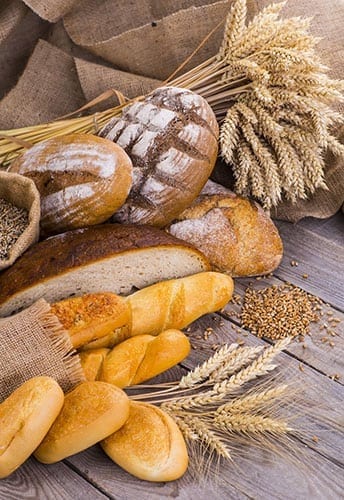
Low Fat Dairy
Again, in the simplest form, low fat dairy can add many positive attributes to your health. Low fat dairy contains protein, vitamin A, B, D, E, magnesium, calcium and folate. Include low-fat Greek plain yogurt, low-fat organic cottage cheese, reduced fat cheese and low- fat milk. If you enjoy intense flavor, add small amounts of blue cheese, Roquefort, Parmesan or Feta cheese to your dishes. Although not considered low in fat, using a tablespoon is acceptable to flavor food.
Lean animal protein
Protein is needed for muscle growth and maintenance and can help keep you satiated. Your body uses protein to build and repair tissues. It is also the building block for bones, cartilage, skin and blood. “When pairing a lean protein with a carbohydrate, it slows down the absorption of sugar from the stomach into your blood stream”. This can help blood sugars from sky rocketing when eaten in proper amounts. Stick to the healthiest choices you can afford. Purchase organic, skinless chicken, organic farm eggs, grass-fed beef and wild fish. Keep the cooking method simple by grilling, baking or broiling, while only using very small amounts of added fat such as sauce, butter or oil, and add fresh or dried spices for a simple, delicious, and nutritious meal. Wild salmon and wild red snapper are two favorites. Both contain Omega 3s, B vitamins and are easy to cook on the grill. Omega 3s are known to assist in heart health, joint mobility, skin protection from free radicals (which protects against UV damage) and brain health. Wild salmon is packed with selenium and niacin but may taste “fishy” to some people. Red snapper is a mild fish with a firm texture and is easy to prepare. Wild fish is always a better choice than farm raised fish.
Dried Spices
Keep your pantry stocked with dried spices including oregano, basil, garlic, kosher or large grain salt (just a pinch), pepper, ginger and turmeric. Stock low sodium broths like chicken, vegetable or beef for cooking. Purchase cooking wines for flavor with little calories. Buy natural, freshly-ground nut butters in small amounts (they go rancid quickly) and keep a few packets of tuna or salmon on the shelf. Add some high quality olive oils, one for cooking and one for drizzling, and some naturally flavored vinegar. Include herbal, non-caffeine teas, decaffeinated green tea and sparkling, flavored, zero-calorie waters to your pantry. Keep dark chocolate squares or kisses (70% cocoa or higher) frozen in single servings for an extra sweet treat when needed.
These simple steps will encourage improved overall health along with controlled blood sugars. No bagged, processed, shakes, or boxed foods were mentioned. Use the plate method by filling 1/2 the plate with non-starchy vegetables, 1/4 of the plate with protein, and the final ¼ with carbohydrate and drink a zero-calorie beverage.
It may take a bit more time and money to keep the refrigerator and pantry stocked, but it should easily pay you back in the future of your health!
Have a question or comment? Post below or email me at [email protected] if you would like to share them with ADW diabetes.
NOTE: Consult your Doctor first to make sure my recommendations fit your special health needs.
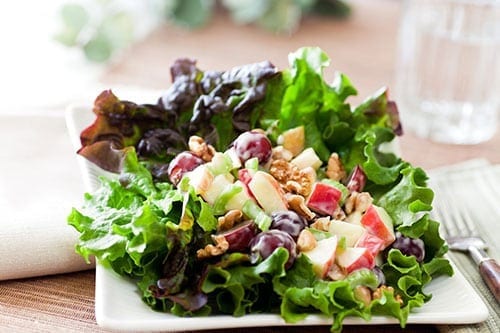






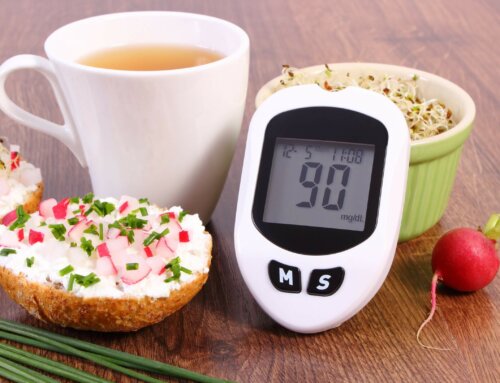



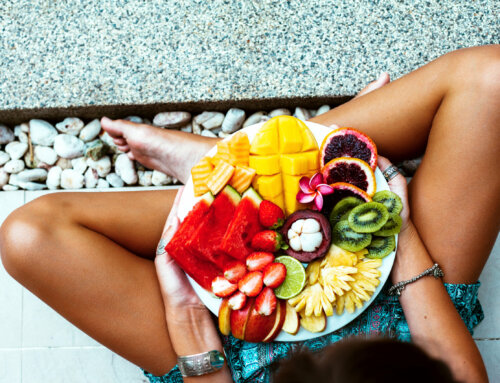
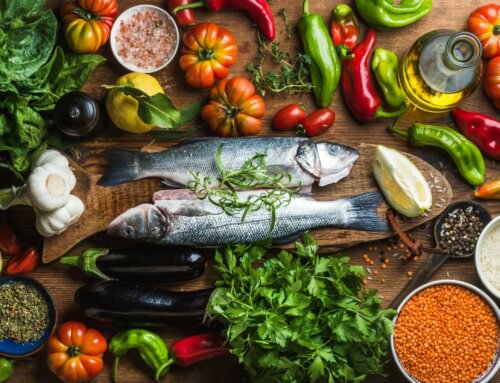
Leave A Comment